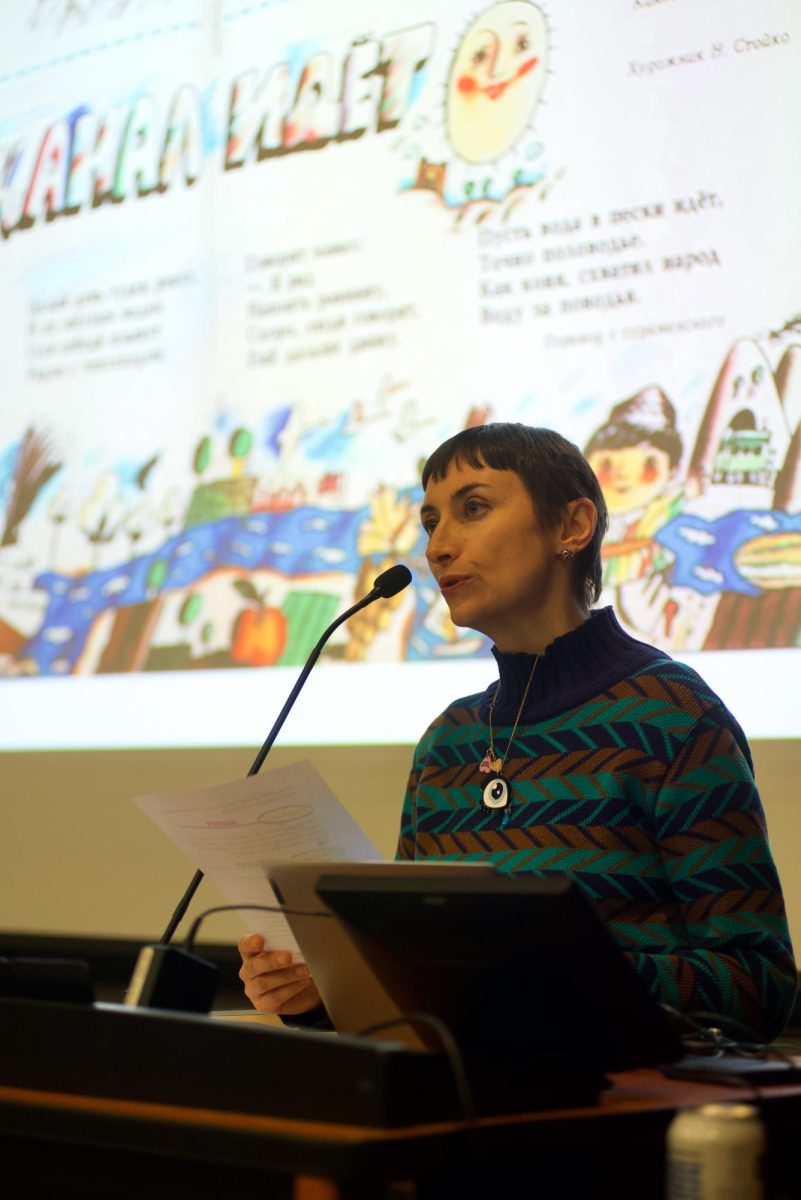A panel of Oberlin alumni who have written award-winning fiction and nonfiction met over Zoom April 24 to answer questions relevant to aspiring writers and curious attendees. Sarah Lariviere, OC ’97; spoke as the moderator with panelists Benjamin Weber, OC ’07; Paolo Bacigalupi, OC ’94; Sonia Shah, OC ’90; and Matthew Sharpe, OC ’84. The speakers shared their experiences with their writing journeys from idea to publication. They also discussed less visible aspects of their processes — the failed attempts, rejections, and pieces of advice that allowed them to write successful works. Although the authors came from vastly different backgrounds and varied greatly in the subjects they wrote about, Lariviere revealed the inherent commonalities that led them to thrive in their careers.
“These authors may seem at first glance to be writing about fairly disparate subjects, but in my reading, what they have in common is an uncanny sensitivity to their subject matter and a commitment to making abstract concepts concrete, alive with detail and emotion,” Lariviere said. “Beyond that, each of these writers’ works transmit a palpable and unflinching intellectual curiosity, even a sort of restlessness, that causes me as a reader to feel like I’m going on an unpredictable sort of adventure, and that it will be deeply worthwhile.”
In order to distinguish the difference between the average writer and a professional author, Lariviere asked the panelists how they knew that their relationship with words and writing extended beyond the ordinary. For Shah, books provided comfort.
“I’ve always loved books as objects,” Shah said. “I was kind of a lonely child. My parents are Indian immigrants, and I just had that life of not fitting in as an American, … [and] also spending a lot of time in India with my extended family who never let me forget that I was not a real Indian. … I felt alienated in a lot of different ways, and books were my salvation.”
For Bacigalupi, on the other hand, writing was a method of escapism, a change of perspective and shift from the ordinary 9–5.
“It was only when I was working in a cubicle in Boston that there was a moment when I finally started thinking that maybe I wasn’t really cut out for it,” Bacigalupi said. “I started writing on the weekends as an escape from my regular day job life. It was probably after about six months of writing on the weekends and fiddling with stories that I started thinking that this was far more interesting than anything else and that I wanted to pursue it. … I suddenly decided I was going to quit my job and spend all my savings and I was going to write a novel, and that was the moment of commitment.”
Although the desire and motivation to write is a crucial aspect of becoming an author, there lies the extraordinary challenges of the process of becoming published — rejections upon rejections. Lariviere asked the panelists about their experiences reflecting on failed attempts and navigating the path to success. Bacigalupi discussed how a writer’s goals and mindset factored into their journeys.
“There’s something to be said for thinking about what your writing goals are,” Bacigalupi said. “If your behaviors are matching your writing goals, then you’re doing it right. If your goal is to be creatively expressive, and you’re not necessarily worried about money, then you’re doing it right. … I sat down and I looked at why am I getting rejected? What are they saying?”
He then offered yet another perspective on rejections within the writing community, examining the importance of appealing to a general audience.
“It was fascinating to get rejected because I was rejected in this very positive way,” Bacigalupi said. “I was told, ‘I can’t believe you’re a first-time novelist. This is very skilled.’ … And then there would be this final bit, and it was like, ‘Unfortunately, this is way too dark. This depressed us.’ One person was like, ‘As a mother, this disturbs me.’ … I thought it was enough to make a really well-lived-in world with unique ideas and well drawn characters. But this emotional arc matters, and especially when a publisher is thinking about printing 5,000 units, 10,000 units, 100,000 units, they’re thinking, ‘What’s the reader’s experience of this going to be?’”
Lariviere also asked about the possibility of returning to a past rejected work, and Sharpe shared his thoughts.
“I was quickly not the person whose ideas got rejected anymore,” Sharpe said. “Even if I had an idea about how to fix them, they were written by a person who felt very different from who I was and had a different agenda and a different understanding, maybe even of what a story was or could do. There was no way I could put myself back into those stories.”
From a more logistical lens, Lariviere asked the panelists about their strategies in maintaining a consistent writing routine.
“When I started out, I still had a programming job, so I would get up at 5:30 every morning and would do half an hour to an hour in a fairly relentless way,” Bacigalupi said. “It turns out that showing up is a lot more important than the amount of time. If you can do a couple hundred words every day, you will generate a book … even if you have all sorts of intrusions that are throwing you off. Returning to that touchstone of being relentless about a small amount goes a long way.”
Aside from the obstacles that the panelists have struggled through in becoming published, they revealed the process of inspiration that allowed their journeys to continue.
“I just say, let’s see what happens today,” Sharpe said. “Let’s see what emerges today. Let’s look at this as an open-ended exploration and embrace gently whatever happens with kindness and love.”








